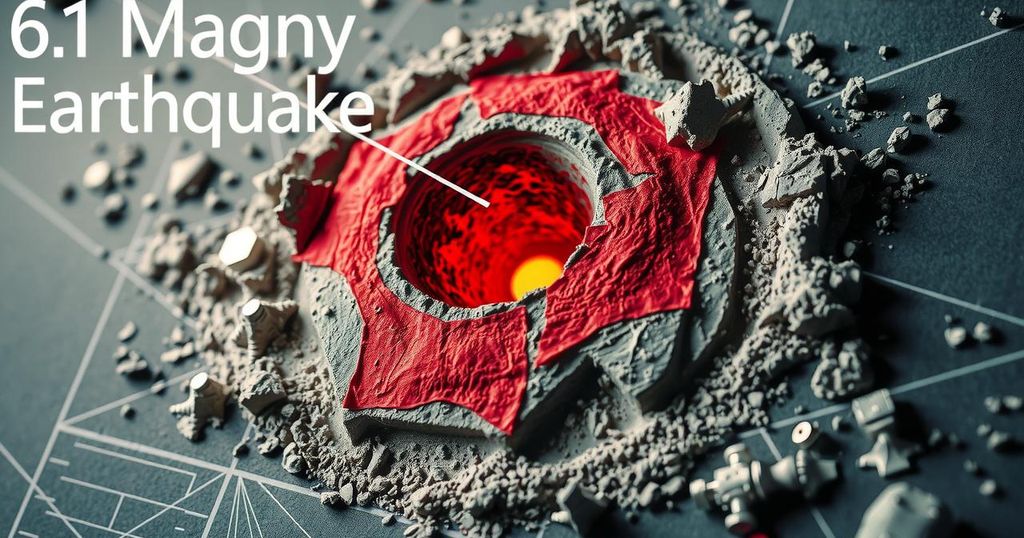A 6.1-magnitude earthquake struck Calama, Chile on January 2, following several other notable seismic events, including a 4.7-magnitude quake in California and a 3.3-magnitude earthquake in Alaska. The USGS documented these occurrences to monitor seismic activity and report public impacts.
On Thursday, January 2, the United States Geological Survey (USGS) reported a 6.1-magnitude earthquake in Chile, specifically centered in Calama at a depth of 99 kilometers (approximately 61.5 miles). At the time of the report, there were 25 accounts from individuals who felt the tremor. This significant seismic event occurred shortly after a 4.7-magnitude earthquake struck California on January 1, originating in Cobb, with a depth of 1.1 kilometers (around 0.7 miles).
Moreover, preceding these occurrences, Alaska experienced a 3.3-magnitude quake in Nikolski on December 30, which was recorded at a depth of 39.5 kilometers (approximately 25 miles). This event followed yet another 3.3-magnitude earthquake in Fort Bidwell, California, recorded earlier in the day at a depth of 3.4 kilometers (roughly 2.1 miles). Notably, the Fort Bidwell event trailed a 6.7-magnitude earthquake on the Kuril Islands, which was reported on December 27, 162.6 kilometers (about 101 miles) deep.
Additionally, the Kuril Islands earthquake was preceded by a 3.6-magnitude tremor near McCarthy, Alaska on December 26, at a depth of 8.1 kilometers (five miles). The Alaska tremor followed a 3.0-magnitude earthquake in Clayton, California on December 25, which was recorded at a depth of 13.2 kilometers (approximately 8.2 miles). Furthermore, the sequence of notable seismic activities traces back to a 5.9-magnitude earthquake in Cuba, centered in Guisa at a depth of 22.2 kilometers (about 13.8 miles) on December 23.
Earthquakes frequently affect various regions across the globe, with particular susceptibility in seismic zones such as California, Alaska, and Chile. The USGS actively monitors and reports seismic activity, providing critical data regarding earthquake magnitudes, locations, and depths. In recent weeks, a pattern of significant seismic events has emerged, raising concerns for affected regions, especially those with a history of earthquake activity. Understanding the frequency and impacts of these tremors is vital for preparedness and response efforts.
In conclusion, the recent seismic activity, highlighted by the 6.1-magnitude earthquake in Chile and several significant quakes across the United States and Cuba, underscores the ongoing nature of geological phenomena in earthquake-prone areas. The USGS continues to serve as a pivotal source of information, enabling communities to remain aware and prepared for potential earthquakes.
Original Source: www.ktok.com






